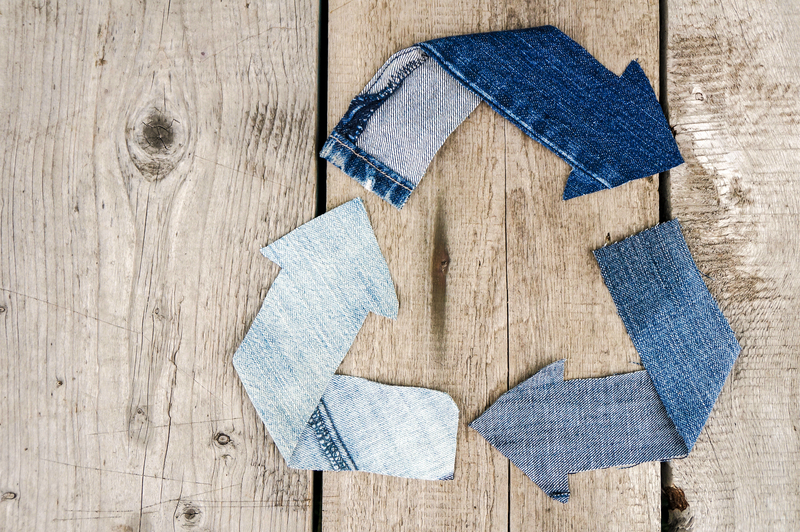Give Your Clothes a Second Life Through Innovative Recycling Tips
Are your closets stuffed with clothes you rarely wear? Throwing away old garments may feel like the easiest option, but innovative recycling tips can help you extend the life of your clothing and reduce textile waste in the process. In this comprehensive guide, we’ll show you how to give your clothes a second life through creative upcycling, donation ideas, repurposing projects, and more. Read on for inspiration and practical advice to turn your wardrobe into an eco-friendly powerhouse!

Why Recycle Clothes? The Impact of Textile Waste
The fashion industry is responsible for nearly 10% of global carbon emissions and produces tons of textile waste annually. Globally, only about 12% of clothing material ends up being recycled--the rest is either incinerated or sent to landfill. By choosing to recycle or repurpose your old clothes, you’re not only saving money and making creative use of materials but also helping to reduce environmental harm.
The Benefits of Giving Clothes a Second Life
- Reduces landfill waste
- Lessens demand for new textile production
- Saves money and encourages creativity
- Supports charitable organizations
- Puts unique, personalized items back into use
Innovative Clothing Recycling Tips You Can Try Today
Ready to give your old clothes a new purpose? Here are some innovative tips and ideas to help you recycle clothes in creative, fun, and impactful ways.
1. Upcycle Clothes Into Stylish New Pieces
Instead of discarding worn-out clothes, turn them into something fresh and fashionable!
- Patchwork Projects: Sew together fabric scraps from old shirts or dresses to create unique tote bags, pillow covers, or even quilts.
- Embellish & Personalize: Add patches, embroidery, or dye to transform a plain tee into a work of art.
- Creative Alterations: Shorten dresses into tops, transform jeans into shorts, or combine parts of different garments for a custom hybrid look.
- Turn Sweaters into Accessories: Make beanies, mittens, or scarves from wool jumpers that have lost their shape.
2. Repurpose Clothing for Home Use
Old clothing can often be reused around the house in surprising ways:
- Cleaning Rags: Cut t-shirts and other soft fabric into dusting and cleaning cloths.
- Reusable Bags: Turn old tank tops or shirts into eco-friendly grocery bags with a quick stitch and cut.
- Cushion & Pet Bed Fillings: Stuff your homemade cushions or dog beds with shredded textile scraps for extra comfort and sustainability.
- Laundry Bags: Use old pillowcases or sheets to create wash bags for delicate laundry items.
3. Donate Clothes in Good Condition
Perhaps you have garments that are clean and intact but simply don’t fit your style or needs anymore. Donating is a simple and effective way to give your clothes a new life:
- Local Charities and Thrift Stores: Support community programs by donating gently used clothing.
- Women’s and Men’s Shelters: Many shelters accept clothing for those in need, especially seasonal outerwear and basics.
- Clothing Swaps: Organize a swap event with friends or neighbors to exchange clothes, keeping the cycle of reuse going within your community.
- Nonprofit Organizations with a Cause: Donate to charities like Dress for Success or Soles4Souls, which help individuals re-enter the workforce or aid disaster victims.
Tip: Always ensure clothing is clean and in wearable condition before donating.
4. Sell or Swap Clothes Online
A digital approach can also help reduce textile waste while generating some extra cash or scoring new-to-you clothes.
- Online Marketplaces: Platforms like Depop, Poshmark, thredUP, and eBay make selling unwanted clothes simple.
- Facebook Groups & Swap Apps: Join local buy/sell/trade groups or try swapping apps to exchange clothing within your area.
- Instagram Closet Sales: Curate a feed with your preloved items and connect directly with buyers for a personalized experience.
5. Recycle Clothes Through Retail Take-Back Programs
Many major retailers now offer textile recycling bins and take-back initiatives, giving your clothes another chance at life, even if they’re too worn out to donate.
- H&M Garment Collection: Accepts all textiles, usable or not, and repurposes them for new products.
- M&S Shwopping: Partnering with charities like Oxfam, this program encourages shoppers to bring in old clothing for recycling.
- Patagonia Worn Wear: Accepts old Patagonia items for refurbishing and resale or recycling.
- Levi's: Offers jean recycling programs in many stores, turning old denim into insulation and new products.
Bring your bag of outdated or damaged textiles to a participating retailer for responsible recycling and sometimes even a store discount.
6. Get Creative with Textile Art and DIY Decor
For the artists and crafters among us, old clothing can be inspiration for numerous upcycled projects:
- Wall Hangings & Weavings: Repurpose vibrant patterned clothes into beautiful wall art or fabric tapestries.
- Rag Rugs: Cut old t-shirts or sheets into strips and weave or braid them into colorful, durable rugs.
- Fabric Garland & Bunting: Use small scraps to create decorative bunting for parties or home decor.
- Quilting: Turn sentimental items (like baby clothes or concert tees) into memory quilts that last a lifetime.
Sustainable Solutions: Textile Recycling Centers and Circular Fashion
If your clothes are truly beyond repair or reuse, don't toss them in the trash--there are practical ways to recycle clothes responsibly:
Find Textile Recycling Bins Near You
- Municipal Recycling Facilities: Many cities provide dedicated bins for textile recycling at local waste centers.
- Specialty Textile Recyclers: Companies like TerraCycle, American Textile Recycling Service, and local nonprofits accept fabric, shoes, and accessories for responsible processing.
After collection, usable clothing may be resold as secondhand, while textiles that can't be reworn are often shredded for industrial use, insulation, or remade into new fibers.
The Circular Economy and Clothing
Supporting a circular fashion system means not only recycling your clothes but also buying from brands that use recycled fibers or offer take-back programs. Look for companies with transparent supply chains, eco-certifications, or those who actively close the loop by turning textile waste into new garments or products.
Tips for Prolonging the Life of Your Wardrobe
Preventing waste begins with being intentional about how we treat and buy clothes. Here are a few ways to make your wardrobe last longer and contribute to a sustainable fashion system:
- Buy Quality Over Quantity: Invest in timeless pieces made to last, not fast fashion.
- Care for Your Clothes: Wash less often, air dry, and store items properly to preserve their shape and color.
- Repair, Don't Replace: Learn basic mending skills--like sewing on a button or patching a hole--to extend the life of your favorites.
- Shop Secondhand: Thrift stores, vintage shops, and resale platforms are great for finding unique, affordable, and eco-friendly clothing.
Frequently Asked Questions: Recycling Clothes
What clothes can't be recycled?
Some textiles--like those heavily soiled with oil, chemicals, or infested materials--should not be sent to recycling centers. Always check what your local facilities accept.
Do retailers really recycle the clothes they collect?
Major brands with published sustainability initiatives usually recycle or repurpose donated garments responsibly. However, check the company's transparency reports and ask questions if you’re unsure.
Is it better to donate or recycle?
If the item is in wearable condition, donating maximizes its second life. Recycle garments only if they're unwearable or local organizations can't accept them.
Can clothes made from blends (like poly-cotton) be recycled?
Yes, though fabric blends are harder to recycle than pure fibers. Check with specialized recyclers or research brands using innovative recycling technologies.

Conclusion: Every Step Counts in Giving Your Clothes a Second Life
Whether you’re upcycling, donating, mending, or recycling, every action you take to give your clothes a second life helps shift the tide against textile waste. By embracing innovative solutions, you’re not only clearing out your closet but also supporting a healthier, more sustainable planet.
Next time you consider tossing out worn jeans or unused shirts, remember: With a little creativity and effort, you can recycle clothes in ways that benefit both people and the planet. Green your wardrobe sustainably--one garment at a time.
Resources
- Find textile recycling near you: Earth911 Recycling Guide
- Upcycling inspiration and tutorials: Pinterest
- How brands are closing the loop: Fashion Revolution
- Further reading on circular fashion: Ellen MacArthur Foundation
Ready to get started? Give your clothes a second life today and be part of the sustainable fashion movement!